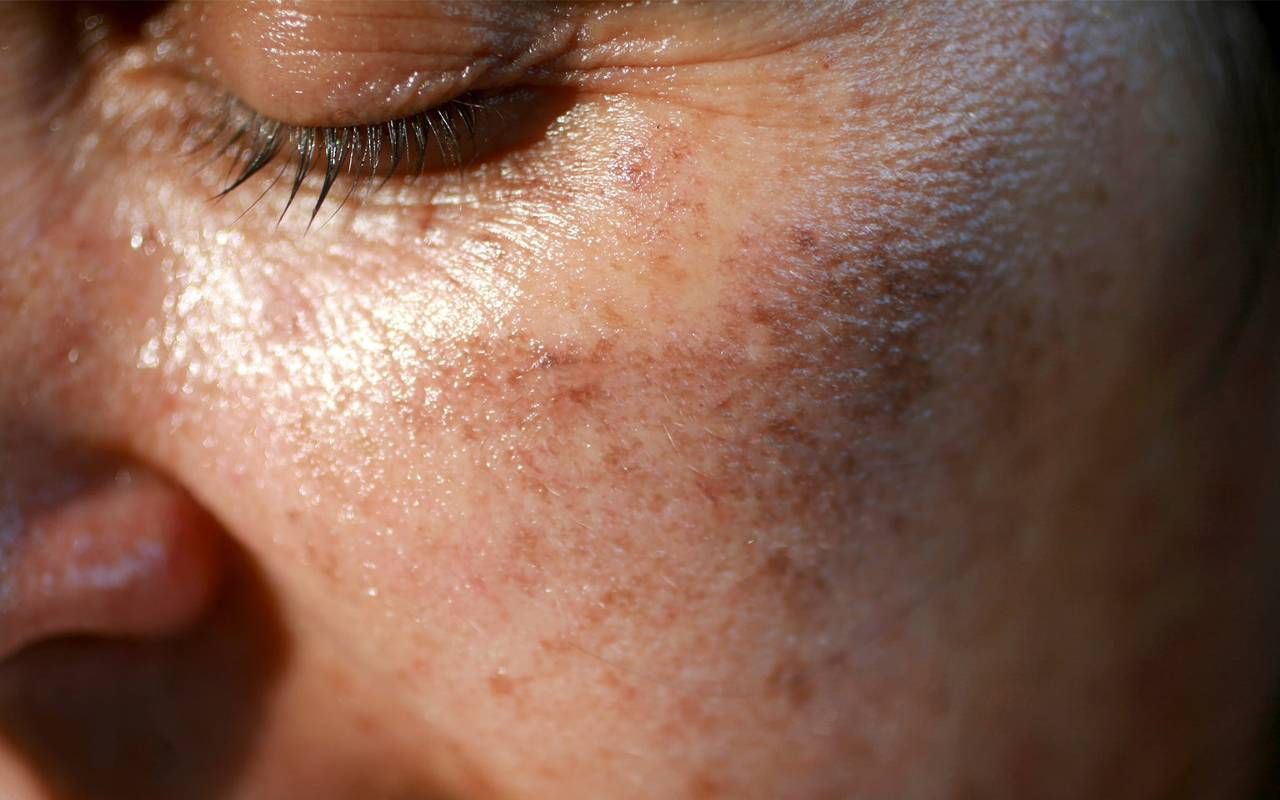Here Come the Sunspots
What are they and why do we get them? The best preventive tactic for sunspots is to keep sun exposure at bay.
When I look at my hands, I think of my father. I remember seeing his calloused hands covered with what he would call "liver spots." As a child, I wondered if he got those spots from eating liver and onions, one of his favorite dishes.

I avoided that dish, thinking it would save me from the dots that covered his hands, wrists and fingers. But the older I got, the more and more of those brown spots appeared on my hands. It was the sun, not the liver, that was the culprit.
"They tend to appear in older people because of the chronic exposure to U.V. radiation over time."
On Sunspots and Older Adults
"Sunspots are the very common tan to brown to black spots that show up on sun-exposed areas, like the face, neck, chest, shoulders and back of hands, says Robert Anolik, M.D. of Laser & Skin Surgery Center based in New York.
"They are due to ultraviolet exposure and are found in almost all Caucasian people by the time they are 60 years old. They tend to appear in older people because of the chronic exposure to U.V. radiation over time," Anolik adds.
Although sunlight helps us produce vitamin D, it can cause skin damage. Ultraviolet light comes from sunlight or tanning beds and can damage DNA or cause other damage, such as skin wrinkling or spotting. And U.V. light can continue to damage the skin after you have left the tanning bed or a sunny location.
Anyone can develop sunspots, but they are ubiquitous in light-skinned people. Some risk factors that increase the possibility of developing sunspots are:
- Frequent sunbathing or having sunburns
- Having light skin
- Using tanning beds
- Going through radiation therapy
- Genetic predisposition to sunspots
Sunspots are different than moles or other discolorations of the skin.
"Sunspots almost always appear as multiple spots broadly covering sun-exposed areas and vary in size from a few millimeters to a couple centimeters. Moles tend to be more discrete and can appear anywhere on the body," says Anolik.
They are considered benign, but Anolik stresses that you should always check with a health professional. "Checking in with a board-certified dermatologist can confirm whether what you are seeing is really a benign sunspot."
If I Have Sunspots, What Should I Do About Them?
Anolik says that confirmed sunspots do not require treatment, but cosmetic procedures are available to reduce their appearance. "By far, the best way to eliminate them is having a dermatologist laser them. Topical creams do exist, but generally, they'll only slightly fade spots as opposed to eliminating them," he explains.
The ideal laser varies depending on the location of the sunspot, the patient's skin tone and other factors. The dermatologist will select the laser that is best for the patient. Regardless of the number of treated sunspots, plan to have time to heal from the treatment.
"Almost all treatment approaches involve some degree of healing, and that healing time depends on the body site. For example, when sunspots are lasered on the face, there is often a scab that heals over a 5 to 7 day window," says Anolik. "On the chest, it can be more like 2 weeks. On the hands, the healing could occur over a period of a month."
The most effective way to prevent sunspots is by limiting the damage that is caused by sun exposure.
New concepts for laser removal of sunspots are constantly being created. "Some of the newer lasers deliver the pulse of energy in a picosecond (which is extremely fast), which can be helpful for finer pigment particles found in some spots. There are also concepts related to cold temperature to eradicate the pigmentation."
Intense pulsed light therapy (IPL) delivers multiple wavelengths of energy, whereas laser therapy uses a single wave. As a result, IPL is typically used to treat larger areas of skin.
As with laser therapy, it is essential to consult a dermatologist before any form of treatment for sunspots or other skin discolorations.
Tips For Managing Sunspots
There are some ways to reduce the possibility of sunspots appearing on your skin in later years. However, Anolik says the most effective way to prevent sunspots is by limiting the damage that is caused by sun exposure:
- Use broad-spectrum sunscreen with an SPF of 30 or greater in all sun-exposed areas.
- Avoid the sun during peak hours (10 am-2 pm) and seek shade when possible.
- Avoid tanning beds.
- Wear sun-protective clothing, which has become more comfortable and fashionable over the past several years.
- Check with a dermatologist at the earliest signs of discoloration. The dermatologist can examine your skin and confirm that all is benign.
"If I see the earliest signs of sunspots, sometimes I recommend some skin brightening products that contain key ingredients such as retinols, tranexamic acid and glycolic acid," says Anolik.
"Ultimately if those don't work and the spots become more visible, that's when it's necessary to reach for the lasers."


